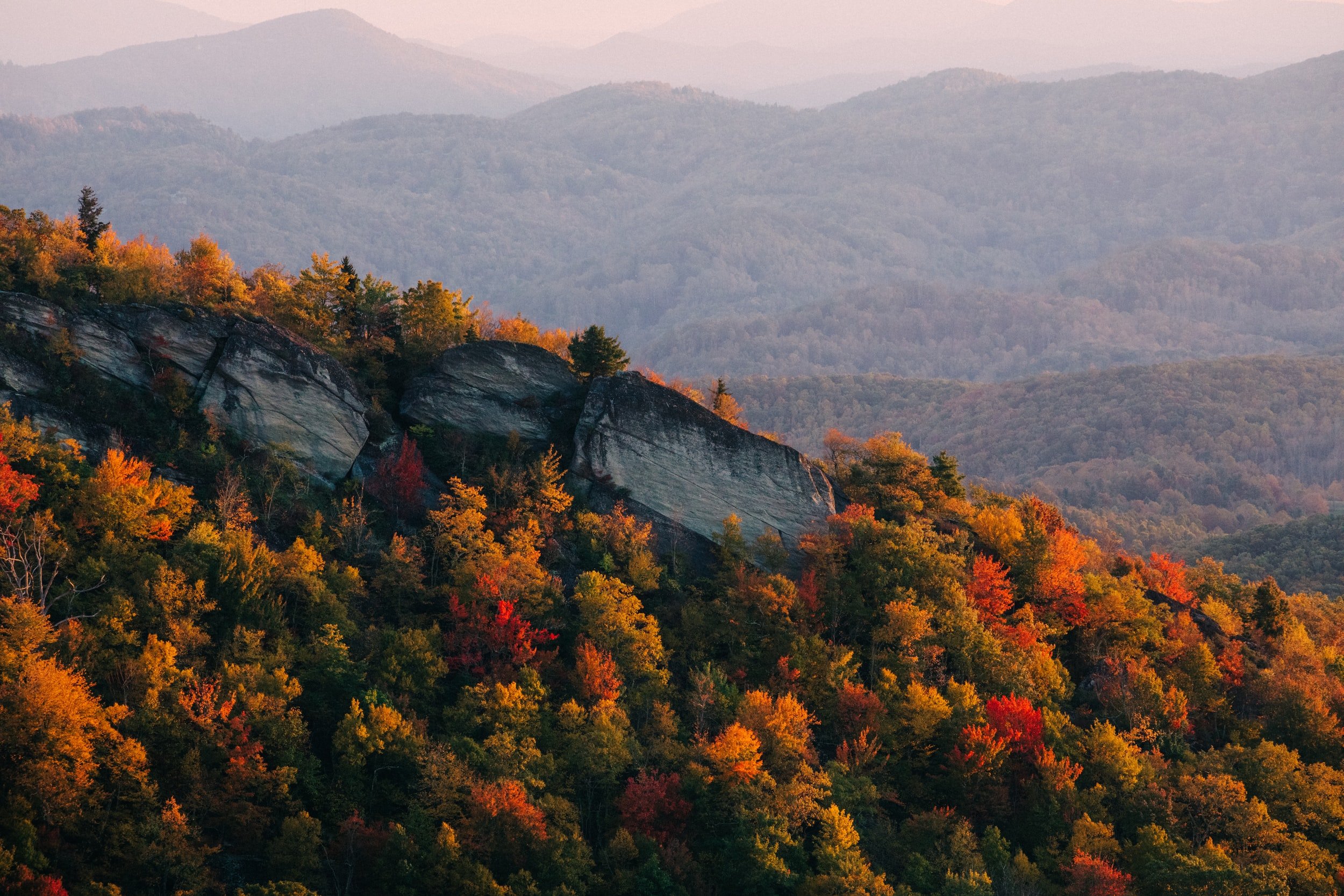
North Carolina
2023-2024
Superfund Projects
Our ability to fund these projects is a testament to the work of our local chapters, volunteers, members, and sponsors. On behalf of the board of directors, we thank each and every one of you.
NC Superfund Projects
The sun begins to set following the Huckleberry Mountain prescribed burn by WRC and TNC staff at South Mountains GL.
July 2023 to June 2024 Superfund Project Snapshot
Each year members of the North Carolina State Chapter of the National Wild Turkey Federation (NWTF) raise money to benefit the wild turkey and other wildlife in North Carolina. The money raised across the state through fundraising events becomes part of the NCNWTF Superfund and is distributed to various habitat and other projects across the state at the discretion of the NCNWTF State Board. These projects have direct benefits to wild turkeys and sportsmen and women throughout North Carolina. The North Carolina Superfund provides matching funds that allow the NC Wildlife Resources Commission (WRC) to leverage additional dollars from the federal Pittman-Robertson grant. The Pittman-Robertson grant was enacted in 1937 and is funded by an 11% excise tax on sporting firearms, ammunition, archery equipment, and handguns. WRC and its staff are very appreciative of the many years of financial support from NWTF, as well as the continued partnership and engagement of NWTF members in many statewide conservation programs and activities. Here is a quick summary of how Superfund money has impacted North Carolina wild turkeys and sportsmen and women through NCNWTF’s continued investment in habitat management and hunter safety over this past year.
Hunter Education
Hunters have a special understanding of and appreciation for our wildlife resources. Long hours spent scouting and understanding the habits and behaviors of wildlife are necessary in order to have a successful hunt – this understanding builds a special respect for wildlife. Hunters also show their respect for the wildlife they hunt by taking ethical shots and using the meat they harvest. Hunters help tremendously to fund conservation through the purchase of licenses and the purchase of firearms and ammunition. The number of active hunters continues to decline across North Carolina and the United States, making it vital to support those who are interested in becoming a hunter so that the hunting traditions can continue in future generations.
Money from the Superfund has been used to assist WRC in funding the purchase of equipment necessary in carrying out several workshops for new hunters in 2018, 2019, and most recently in 2023:
· Funding assisted with workshops in 2018, 2019 and 2023 where 458 participants were reached.
· A variety of different game workshops for new hunters are being hosted to an estimated 300 participants across the state in 2024.
· Funding purchased a variety of gear for new hunters to practice shooting and to learn to use tree stands and blinds, etc.
· Superfund dollars also provided turkey box calls and squirrel calls for participants of turkey and squirrel hunting workshops.
Prescribed fire is a valuable wildlife habitat management tool in the state of North Carolina. While fire is often the most cost-effective management tool to use, it is also challenging to use in our changing state. Firebreaks must be constructed and then prepared before burns. Weather conditions must meet very specific parameters before a prescribed fire can be conducted, often limiting the number of days that prescribed burns can be conducted. In order to burn safely, burn crews must also have an adequate number of crew members assisting on the ground as determined by the acreage of the area to be burned. Additional NCNWTF funding further supports designated Prescribed Fire Burn Crews, helping to increase the ability of the WRC to take better advantage of available burn-days.
The Superfund has helped fund the work of The Nature Conservancy (TNC) Prescribed Fire Burn Crew as it assisted WRC staff with managing wildlife habitat using prescribed fire. The following burning activities benefitted public game lands located across all 3 regions of the state:
· 2,722 acres across the mountain region:
o South Mountains GL- 2,125 acres burned
o Sandy Mush GL- 167 acres burned
o Johns River GL- 119 acres burned
o Green River GL- 311 acres burned
·
Prescribed Fire
17,269 acres across the southern piedmont region and the central and southern coastal regions:
o Juniper Creek GL – 1,902 acres burned
o Suggs Millpond GL – 966 acres burned
o Holly Shelter GL – 614 acres burned
o Carteret County GL – 2,584 acres burned
o Croatan/Pettiford Creek GL – 1,036 acres burned
o Neuse River GL – 203 acres burned
o Goose Creek GL – 553 acres burned
o Sandhills GL – 9,408 acres burned

Habitat Creation:
Each year, WRC’s Land and Water Access Division (LAWA) field staff and crews dedicate a large amount of time and effort to managing public game lands by creating. maintaining, and improving wildlife habitat there. While maintaining a diversity of habitat types is critical for a variety of wildlife species, the availability of young forests and forest openings is typically very limited across the landscape. Native grasslands and young forests are two specific habitat types that require active management to provide productive wildlife habitat conditions over time. With management, these areas provide critical nesting and brooding habitats for wild turkeys and other wildlife species. The Superfund assists in funding projects that create and maintain these vital, seasonal habitat areas for the wild turkey.
Superfund helped fund the creation of several wildlife openings on Needmore Game Lands in 2019. Game Lands staff has continued to maintain these openings and have been expanding the size of these openings in some areas over the past few years.
Equipment:
Prescribed fire and the creation and maintenance of early successional “old field” habitat areas, including native grasslands and young forests, are important for turkey management. Superfund dollars help provide the special equipment needed to implement these habitat management practices. While the purchase of equipment may seem less important than other direct habitat management expenditures, having proper working equipment ensures these habitat management practices can be implemented at the proper times while making sure that field crews can work safely and efficiently.
Many pieces of specialized equipment have been funded over the years, ranging from ATVs and pumps for prescribed fire crews to no-till drills and other large pieces of farm machinery and implements. Once acquired, this equipment is used again and again through multiple years of rotational habitat management. The Superfund dollars going to various equipment purchases by LAWA’s Game Land crews has played a significant role in managing and improving additional habitat acres for wild turkeys:
· Wilkes Crew: Diamond Mulcher- 20 acres masticated and mulched to maintain early successional habitat, drill purchased in a prior year
· Morganton Crew: Great Plains seed drill- 37 acres planted, drill purchased in a prior year
· Burnsville Crew: Truax seed drill- 30 acres planted, drill purchased in a prior year
· Marion Crew: Truax seed drill- 22 acres planted, drill purchased in a prior year
· Balsam Crew: Truax seed drill- purchased in 2017 still in use today
Suggs Mill Crew: Truax seed drill and trailer- purchased recently and ready to create early successional habitat in spring of 2025





